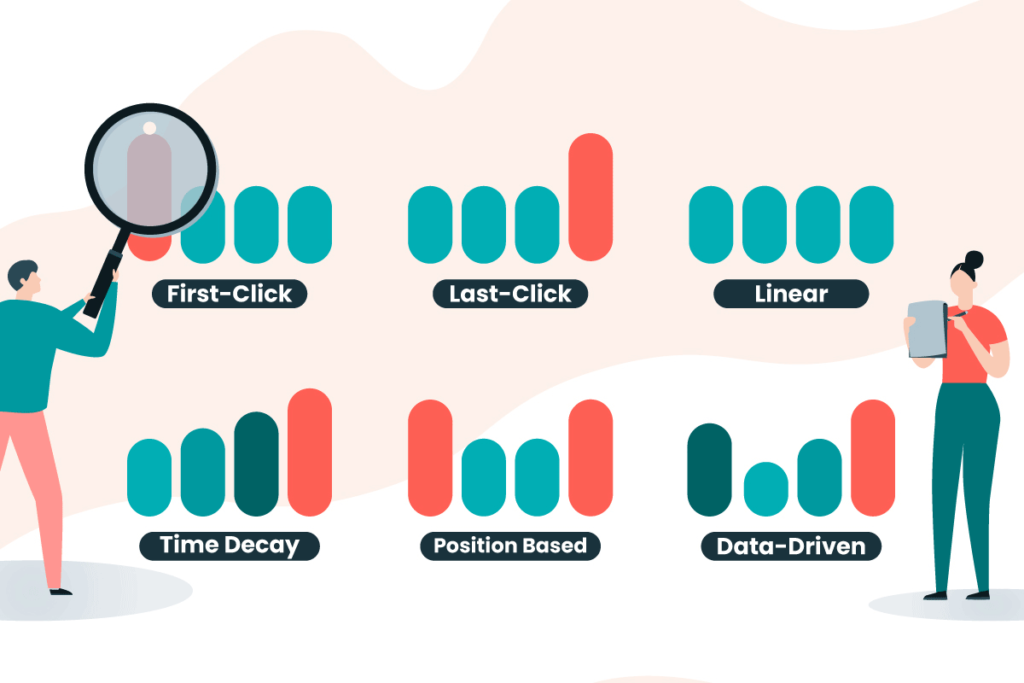
Welcome to our 2024 guide on the exciting world of attribution models in Google Ads! If you’re ready to unlock the power of tracking conversions, maximize your return on investment, and drive more sales – then you’ve come to the right place. With our guidance, you’ll not only understand how attribution models work but also how they can be used to effectively optimize your Google Ads campaigns. It’s time to take your advertising success up a notch – let’s get started!
Table of Contents
What are the benefits?

Source: growthmindedmarketing.com
Attribution modeling plays an important role in understanding how to get the most from your advertising budget. It helps marketers evaluate the effectiveness of their campaigns and makes it easier to allocate ad spend across campaigns, channels, and platforms. Before diving into the various types of attribution models available in Google Ads, it’s important to understand the benefits that come with this type of analysis.
By leveraging data-driven analysis, attribution models provide detailed insights into each element of a campaign’s journey to conversion. This allows marketers to make more informed decisions when optimizing a campaign’s performance while also gaining a better understanding of how each channel or platform contributes toward overall success.
Using UTM parameters for Google Ads further enhances this analysis by accurately tracking the source, medium, and campaign details, helping marketers understand which specific ads and keywords drive the most conversions.
In addition, it can help measure brand awareness by giving insight into which channels are driving new prospects that may not convert immediately but will eventually lead to conversions after further consideration or contact from the business. Furthermore, it can provide detail on how different segments or personas engage differently with campaigns in terms of both timing and frequency before conversion takes place. This eases touch-point optimization so that you can better focus attention on those channels providing the best ROI for your budget at any given time.
How do attribution models work?

Source: alfaservice.net
Google Ads attribution models use data to assign credit for conversions and other valuable actions. They can determine which ads, keywords, and campaigns are most likely to contribute to a conversion. These models measure the parallel or serial influence of user interactions, along with the relative value of each interaction and the cumulative effect of multiple interactions. This helps marketers understand how all customer touch points within networks interact with each other over time.
There are several types of attribution models that Google Ads offers: last-click (the standard model available in Google Ads); first-click (gives credit for conversions to the ad or keyword that initiated the conversion journey); linear (credit is evenly divided between all ads or keywords in a campaign); time decay attributes weight more to clicks near the conversion; position-based weights more credit to clicks in the middle of a customer’s journey; data-driven attributions (uses machine learning models to assign credit).
Google Ads also offers custom attribution curves, allowing marketers to weight their conversions according to their own criteria and preferences. Marketers can customize their own creative curves by assigning different values for different types of interaction over various time periods. All these features help optimize marketing performance by ensuring campaigns are played out according to marketing objectives, maximizing ROI and efficiency across channels.
Conclusion
In conclusion, these models in Google Ads provide digital marketers with the ability to gain invaluable insights into their campaigns, as well as helping to optimize digital advertising performance. They are a powerful way to measure how successful different digital marketing channels are and can give your campaigns a competitive edge. By understanding them and their implementation, you can make informed decisions on how best to allocate your budget, analyse performance and ensure you get the most out of Google Ads.







